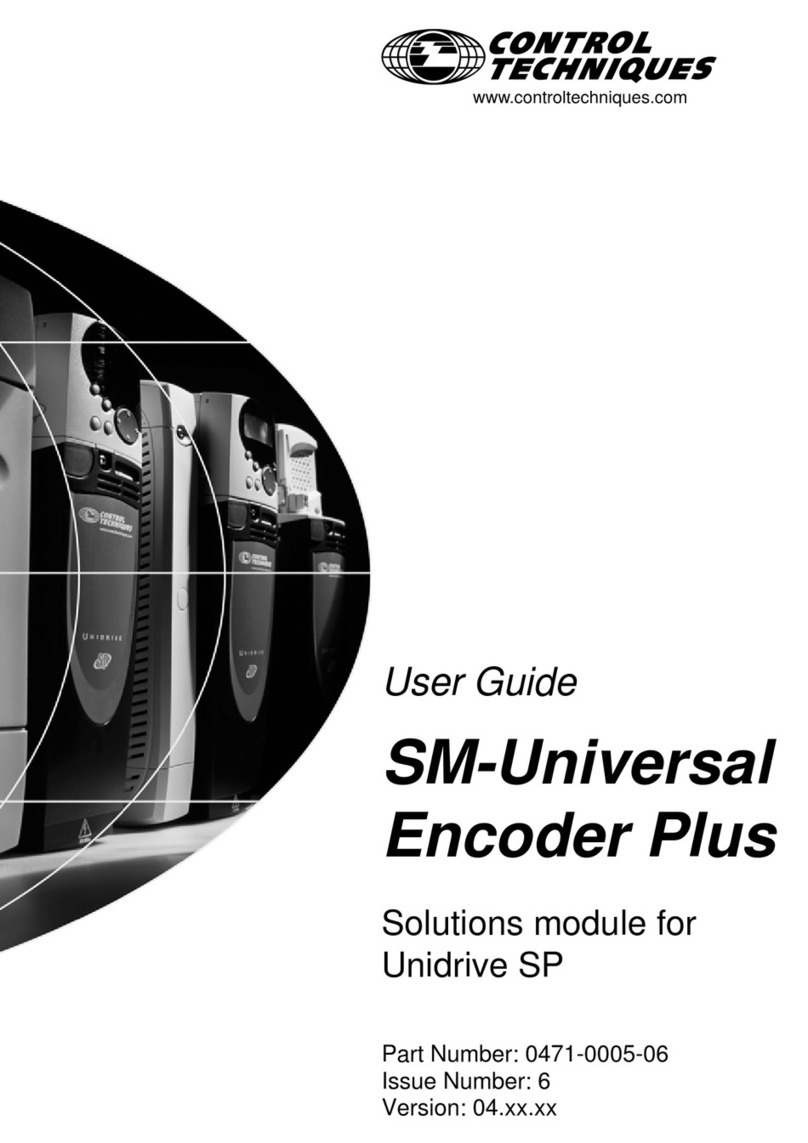
SM-Encoder Plus & SM-Encoder Output Plus User Guide 5
Issue: 4 www.controltechniques.com
How to use this
guide
Safety
information Introduction Installing the
Solutions Module Getting started Parameters Diagnostics Terminal data Index
2 Safety information
2.1 Warnings, Cautions and Notes
2.2 Electrical safety - general warning
The voltages used in the drive can cause severe electrical shock and/or burns, and
could be lethal. Extreme care is necessary at all times when working with or adjacent to
the drive.
Specific warnings are given at the relevant places in this User Guide.
2.3 System design and safety of personnel
The drive is intended as a component for professional incorporation into complete
equipment or a system. If installed incorrectly, the drive may present a safety hazard.
The drive uses high voltages and currents, carries a high level of stored electrical
energy, and is used to control equipment which can cause injury.
Close attention is required to the electrical installation and the system design to avoid
hazards, either in normal operation or in the event of equipment malfunction. System
design, installation, commissioning / start up and maintenance must be carried out by
personnel who have the necessary training and experience. They must read this safety
information and this User Guide carefully.
The STOP and SECURE DISABLE / SAFE TORQUE OFF functions of the drive do not
isolate dangerous voltages from the output of the drive or from any external option unit.
The supply must be disconnected by an approved electrical isolation device before
gaining access to the electrical connections.
With the sole exception of the SECURE DISABLE / SAFE TORQUE OFF function,
none of the drive functions must be used to ensure safety of personnel, i.e. they
must not be used for safety-related functions.
The SECURE DISABLE function and secure input on Unidrive SP and the SAFE
TORQUE OFF function of the Digitax ST meet the requirements of EN954-1 category 3
for the prevention of unexpected starting of the drive. They may be used in a safety-
related application. The system designer is responsible for ensuring that the
complete system is safe and designed correctly according to the relevant safety
standards.
Careful consideration must be given to the functions of the drive which might result in a
hazard, either through their intended behaviour or through incorrect operation due to a
fault. In any application where a malfunction of the drive or its control system could lead
to or allow damage, loss or injury, a risk analysis must be carried out, and where
A Warning contains information, which is essential for avoiding a safety hazard.
A Caution contains information, which is necessary for avoiding a risk of damage to the
product or other equipment.
A Note contains information, which helps to ensure correct operation of the product.
WARNING
CAUT IO N
NOTE






























